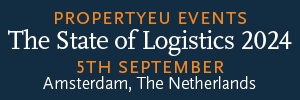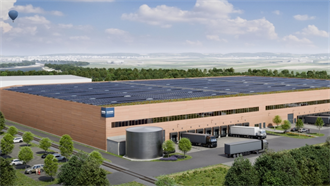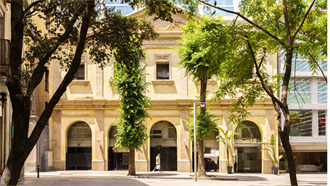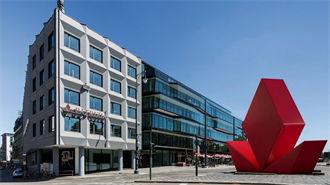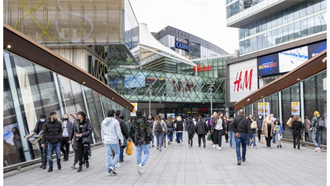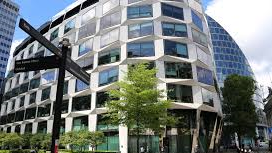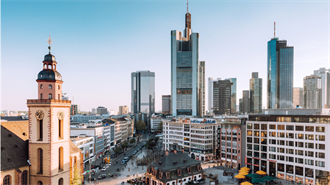It’s a story as old as real estate, but the demand-supply equation, which has been underpinning the attractiveness of logistics property for some time, is continuing to drive yield compression across Europe.
A shortage of land and tough planning laws are leaving occupiers scratching their heads, despite the growing appetite to pay more for rents. Add in increasing nearshoring requirements, the e-commerce boom and post-Covid recovery, and the market is in the grip of an acute space crisis. The logical next step for many is considering new locations and even alternative geographies in addition to the traditional logistics hot spots, according to Tasos Vezyridis, executive director, EMEA industrial & logistics and retail research at CBRE.
That willingness to look further afield is in turn already prompting the emergence of a particular set of European markets which look set benefit from increased activity, he says.
Winning markets
Leading the pack, Vezyridis highlights the Mediterranean markets of Greece, Spain, and Italy as all offering key entry points into Europe. ‘Spain offers higher labour availability than most other Western European countries and is accessible through the Suez Canal, making it a compelling port of entry for goods from Asia.
‘Piraeus, in Greece has emerged as the top port in the Mediterranean and in turn, has led to heightened demand for logistics space in nearby Athens.’
Another clear front-runner remains central and eastern Europe (CEE), despite the concerns of Western investors over geopolitical tensions and the potential ramifications of Russia’s invasion of Ukraine. The overwhelming need for space and skilled labour is continuing to drive take-up in these areas, CBRE data shows. Add in higher yields and lower transport costs, and both landlords and occupiers see ready opportunities.
Prior to the Ukraine conflict, Poland would have been one of the top emerging markets for re-shoring manufacturing from Asia, but Vezyridis concedes that the picture there has become more complex in recent months. ‘In Poland, the lack of supply is being exacerbated due to a lack of labour, relating to Ukrainians returning home to join the conflict. But the demand is still strong and it remains an interesting market.’
Safety stock angle
A key strategy being implemented to fight stock disruption in the current climate is that of suppliers increasingly holding more inventory, also known as ‘safety stock’. In CBRE’s EMEA 2022 Retail Occupier Survey, which surveyed over 50 of Europe’s largest retailers accounting for over 70,000 stores worldwide, 30% of retailers said they intended to boost capacity to hold greater inventory levels, and/or nearshore manufacturing to Europe.
These shifts, alongside the ever-growing consumer demand for e-commerce, are accordingly prompting a geographical rethink even within Europe’s most mature markets, Vezyridis suggests. ‘One of the decentralised UK corridors in the past was Yorkshire and the North East. These zones now have rock-bottom vacancy,’ he says, pushing occupiers to even more remote locations in the UK. ‘In France, markets have been shifting for some time away from the central axis, to areas like Bordeaux and Nantes. In Italy, demand is also growing in the south. Supply-side disruptions are just compounding the overall strong occupier demand trend.’
Meanwhile, despite Turkey’s vicinity to the war zone, the country represents an interesting contribution to the space race, particularly for manufacturers. ‘Turkey is the seventh largest global exporter of textiles and apparel by value. Rising shipping costs and delayed production in mainland China will prompt retailers to consider manufacturing in Turkey,’ Vezyridis notes.
Labour markets
If the greatest issue now facing occupiers is not rising rents, but labour availability, how do these ‘decentralised’ markets stack up in terms of local workforce? ‘On the whole, very well,’ Vezyridis confirms. ‘In some of these markets, such as Greece, labour availability is higher than other markets and the quality is there. It’s the same for those occupiers that headed to the north of England - they found greater labour pools with appropriate skills.’
He adds: ‘Based our 2022 EMEA Logistics Occupier survey, another thing that will help is automation. Design has become increasingly important to logistics operators. If you get the right combination between design allowing automation and the labour pool… this is going to attract tenants.’ On the same note, sustainability characteristics and the need to hit ESG targets mean that the overall build remains a key part of clinching the deal, location aside.
Concludes Vezyridis: ‘One thing to remember when looking at alternative geographies is that while nearshoring is a feature of the current outlook, we have to consider that things will go back to ‘normal’ at some stage. Post-Covid, after the lockdowns in Asia, and the conflict in Europe… two years down the line, will we still be facing the same issues? Potentially not.’
He signals another note of caution about heading for the hills: ‘Don’t forget as well that the major global supply chains were established a long time ago and have been there for years for good reason. You can’t switch those up overnight. There will still be imports from China for the foreseeable future and many of the core routes remain central to global movements.’




